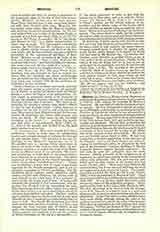

Medices (DE MEDICIS), HIERONYMUS, illustrious as a scholastic of acumen and penetration, b. at Camerino in Umbria, 1569, whence the surname de Medicis a Camerino. He was clothed with the Dominican habit at Ancona. He first distinguished himself as professor of philosophy and theology in various houses of the Province of Lombardy, whence he was advanced to a professorship in the more important theological school at Bologna. He was approved by the general chapter of his Order held at Paris, 1611, and raised to the mastership and doctorate. He was then performing the duties of general censor for the tribunal of the Inquisition established at Mantua, for which reason he is said eventually to have secured the transfer of his affiliation to the convent of that place (1618). His laborious and fruitful career closed in 1622. It had been marked by a studious application to the doctrines of St. Thomas. Just as the Paris chapter was acknowledging his intellectual ability, he completed the first part of the invaluable “Summw theologise S. Thomae Aquinatis doctoris angelici formalis explicatio”. In this work he puts into syllogistic form the whole Summa. Aiming primarily at the enlightenment of beginners, he contributes notably to the instruction of others more advanced. The first part was not published until the first section of the second part was ready (Venice), 1614. Three years later followed the second section, but it was not until 1622 that the third part appeared at Salo, instead of Venice. The supplement had preceded the third part by a year (Venice, 1621); it was not published at Mantua in 1623. Other more correct editions have followed even as late as (Vici) 1858-1862. It is to Jacobus Quaff that credit is due for having improved the original in accuracy. He reproduced the work in five tomes, folio (Paris), in 1657. The chief advantage to be derived from the arrangement of St. Thomas in syllogistic form is a quickness of grasp with an easiness of assimilation not otherwise obtainable. In the Vici edition certain additions have been made which, although raising the value of the work as a manual, are outside the scope of the original. They serve as appendices to each question and, under the caption “Utilitas pro Ecclesia S. Dei”, furnish the student with practical applications of the original matter in view of dogmas subsequently developed or contemporary heresy.
THOMAS A K. REILLY

